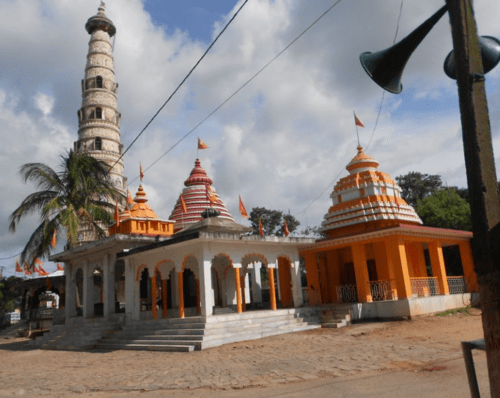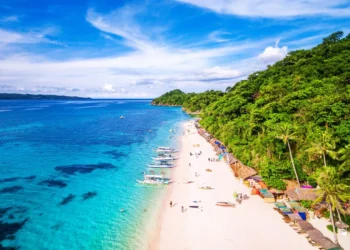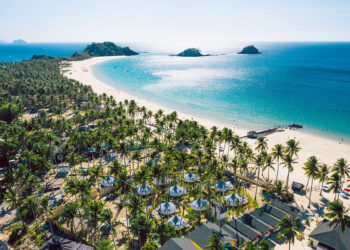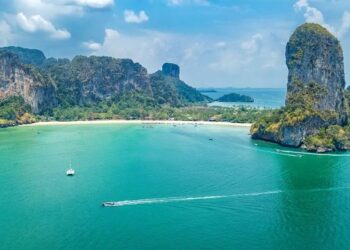Situated in the tranquil hills of Bichna village, Khunti district, Jharkhand, the Angrabadi Temple, also known as Amreshwar Dham, is a sacred shrine of worship dedicated to Lord Shiva, revered as Amreshwar, the lord of mangoes. Believed to have ancient roots, with its Swayambhu Shivlinga emerging centuries ago, this temple is famed for its roofless Shiva shrine, kept open under a banyan tree by divine decree. It was renamed as Amreshwar Dham by the Sage Shankaracharya Swami Swarupananda Saraswati. Its serene, forested setting draws many seeking peace and blessings.
Notable Fact: The temple’s main Shivlinga, believed to have sprouted beneath a mango tree, remains roofless, as Lord Shiva reportedly appeared in dreams to halt any roof construction, a mystical trait that names it Amreshwar Dham, meaning “mango-lord’s abode.”
Overview of Angrabadi Temple
Angrabadi Temple, in Bichna village, 9 km from Khunti and 45 km from Ranchi on NH-20, is a key Hindu pilgrimage site for Shaivism. Known for its Swayambhu Shivlinga, the 8-acre complex houses shrines for Ganesha, Ram-Sita, Hanuman, Durga, and Radha-Krishna. Devotees offer milk, bilva leaves, and water, believing Shiva fulfills wishes. Managed by the Amreshvar Dham Prabandh Samiti since 1985, it supports 5000–10,000 visitors during festivals, with shops selling puja items. A spiritual haven, it blends Munda folklore with Hindu worship, set in Jharkhand’s low hills.
History of Angrabadi Temple
Records are sparse, but local lore ties the temple to centuries past, with the Shivlinga said to have emerged under a mango tree, per Munda tales. Renamed Amreshwar Dham in 1985 by Shankaracharya Swami Swarupananda Saraswati, it was modernized that year, adding shrines for Durga and Hanuman. Oral stories claim a sage saw Shiva’s vision here, marking it sacred, while another tale tells of a villager’s prayers answered during a drought. The 2010 renovation added a yoga mandap. During Shravan and Maha Shivratri, 50,000 devotees visit, cementing its spiritual fame.
Architecture of Angrabadi Temple
Angrabadi Temple, spread over 8 acres at 1800 feet altitude, follows a simple North Indian style, with the main Shiva shrine uniquely roofless, shaded by a banyan tree. The Shiva shrine, 5 meters by 5 meters, built of whitewashed sandstone, houses a 2-foot Swayambhu Shivlinga. Other shrines, each 4 meters by 4 meters, for Ganesha, Ram-Sita, Hanuman, Durga, and Radha-Krishna, are aligned in a row, topped with small domes. The complex includes a 10-meter by 8-meter pond, 100 meters east, for ritual baths. The entrance, a 5-meter-wide arch, bears “Amreshwar Dham” in Hindi. The unpaved yard, 3000 square meters, holds 5000 devotees. Each shrine’s distinct design adds charm.
Sculptures of Angrabadi Temple
The temple’s heart is the 2-foot Swayambhu Shivlinga, black stone, unadorned, nestled in a hollow, once under a mango tree. Ganesha’s 2-foot idol, black stone, holds a modak. Ram-Sita’s 3-foot idols, white marble, depict Ram with a bow. Hanuman’s 4-foot idol, red sandstone, carries a mace. Durga’s 3-foot idol, black stone, holds a trident. Radha-Krishna’s 2.5-foot idols, white marble, are flute-playing. Shrine walls bear 10 carved panels, 0.8 meters by 0.4 meters, showing Shiva’s Tandava and Ramayana scenes, etched 2 centimeters deep, unpainted. The arch has 0.5-meter floral carvings.
Information for Travelers
How to Reach Angrabadi Temple, Khunti
In Bichna village, 9 km from Khunti, 45 km from Ranchi on NH-20, the temple is reached by bus, taxi, or auto, set by low hills.
By Air
Birsa Munda Airport, Ranchi, 30 km away, connects to Delhi (2.5 hours), Kolkata (1.5 hours), Mumbai (2 hours), Bangalore (2.5 hours).
By Train
Hatia Railway Station, 30 km away, links to Kolkata (6 hours), Delhi (12 hours), Patna (5 hours). Autos from Hatia to Bichna take 45 minutes.
By Road
Bichna connects to Khunti (9 km, 20 minutes), Ranchi (45 km, 1 hour), Jamshedpur (140 km, 3 hours) via NH-20. State buses cost ₹20–100; private buses run hourly. Taxis cost ₹800–2000. Autos cost ₹20–50, flat terrain, no steps.
Hours and Entry
Open daily, 6:00 AM–1:00 PM, 2:00 PM–8:00 PM. Free entry; puja costs ₹50–300. No photography in the Shiva shrine. Wear clothing covering shoulders and knees; women wear sarees or suits, men wear kurtas or dhotis.
Best Time to Visit
October to March, temperatures 14–25°C, suits visits. Shravan (July–August) and Maha Shivratri (February) draw 50,000, book early. Avoid April–June, 25–40°C.
Nearby Attractions
Panch Gagh Falls, 9 km, five waterfalls, picnic spot.
Birsa Mrig Vihar, 20 km, deer park in sal forest.
Ulihatu, 37 km, birthplace of Birsa Munda.
Deer Park, 20 km, forested picnic spot.
Ranjrappa Waterfall, 68 km, lush green cascades.
Final Thoughts
Angrabadi Temple in Khunti, Jharkhand, is a sacred heritage in India’s heart. Lord Shiva’s mystic grace, beneath the open sky, touches them who come, making it a place you must see among India’s holy spots for devotees and travelers alike.











